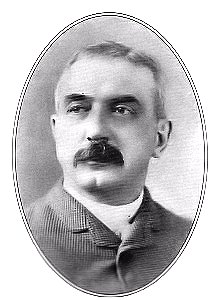Introduction

Born: June 4, 1842, Woodstock, Vermont.
Died: August 3, 1914, at the home of his sister, Mrs. James B. Jones, in Woodstock, Vermont.
Buried: North Chapel Universalist Society cemetery, Woodstock, Vermont.


Born: June 4, 1842, Woodstock, Vermont.
Died: August 3, 1914, at the home of his sister, Mrs. James B. Jones, in Woodstock, Vermont.
Buried: North Chapel Universalist Society cemetery, Woodstock, Vermont.

Whitney’s early education was in public schools. He later attended the Vermont Episcopal Institute in Burlington.
He studied music first with local teachers, and later with Carl Wels in New York. He then returned to Montpelier, where he was organist and music director at Christ Church for four years, then at St. Peter’s, Albany, New York, then at St. Paul’s, Burlington, Vermont.
In 1870 Whitney resumed his studies under Professor John K. Paine of Harvard University, taking lessons on the organ, and pianoforte in composition and instrumentation, and assisting Paine as organist in Appleton Chapel.
In 1871, he became organist at the Church of the Advent in Boston, Massachusetts, staying there until 1908.
Whitney was frequently engaged as conductor of choir festival associations in Massachusetts and Vermont. He also conducted many choral societies in and around Boston, and had a reputation as being very successful in training and developing boys’ voices. In that position, he was identified with liturgical music, vested choirs, and church music.
For a time, Whitney taught at the New England Conservatory of Music. He established there for the first time a church music class, in which pupils learned how to properly interpret sacred music, but also how to manage the organ in church music.
Whitney wrote church music quite extensively, and also piano and miscellaneous music. Among his compositions were a trio for pianoforte and strings, many solos, and arrangements for both pianoforte and organ, as well as several church services, te deums, miscellaneous anthems, and songs both sacred and secular.
Whitney was the first vice-president and one of the organ examiners of the American College of Musicians, a founder of the American Guild of Organists, and served on the executive board of the guild’s New England chapter.